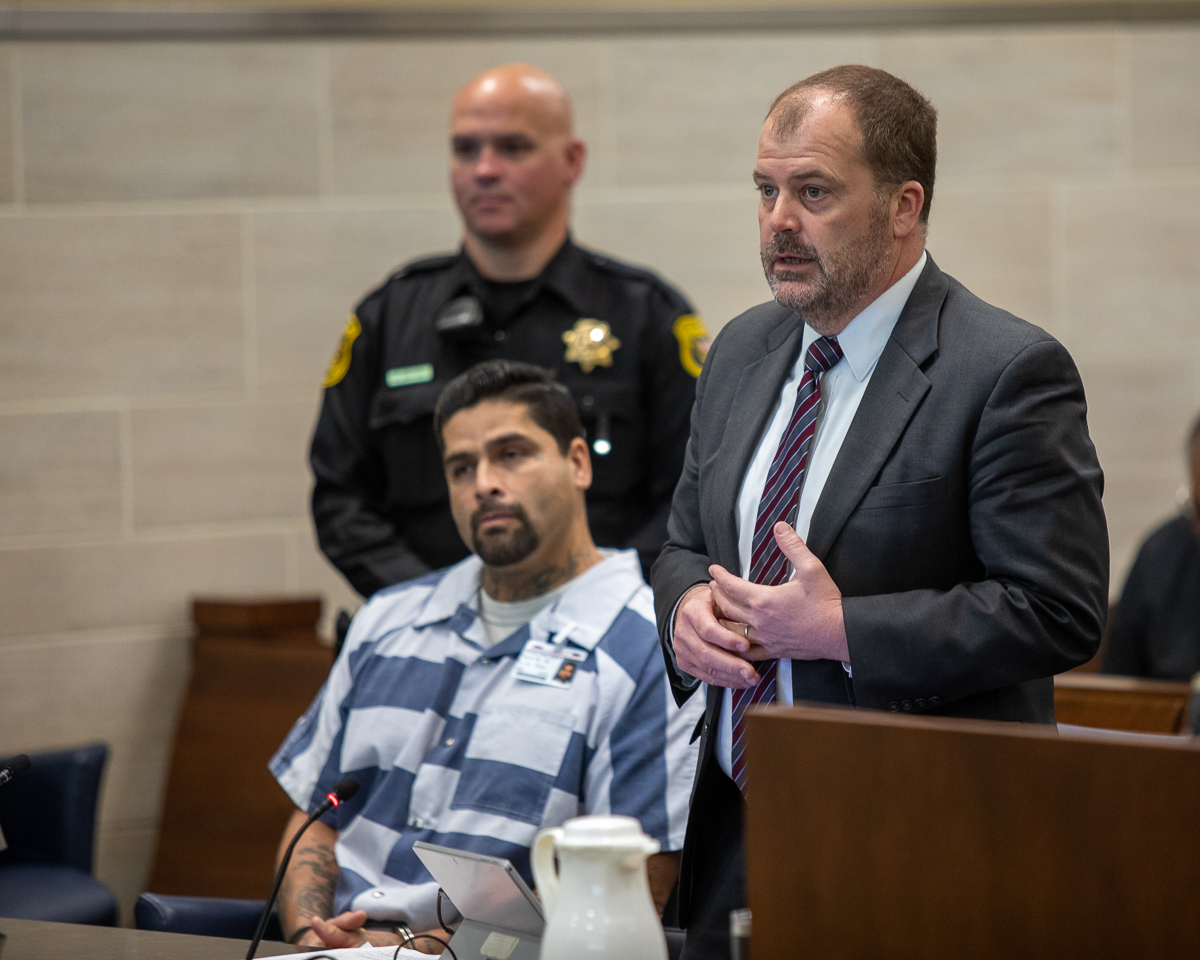

By Sarah Abbott and David Greenwald
WOODLAND – Two men convicted in the 2002 murders of Eric Folsom and Robert Stepper appeared in Yolo County Court, in an effort to be resentenced under SB 1437 and PC § 1170.95, were denied an evidentiary hearing by Judge Paul Richardson.
Judge Richardson in his lengthy explanation noted that the changes in the law require the petitioner to make “a prima facia showing that he could not be guilty of first degree murder because of changes to Penal Code section 188 or 189, 1170.95(a)(3).”
Judge Richardson relayed that Olague and Arellano met the first two conditions, and that their petitions for resentencing rested on whether they could establish evidence that that they could not be convicted of murder in the first degree due to the changes made to PC §§ 188 and 189.
Both Arellano and Olague were convicted of two counts of first degree murder, two counts of attempted murder, and three counts of special circumstances. They are both serving sentences of life without parole. In this hearing, CALJIC 8.80.1 (jury instructions) was brought before the jury. This instruction “explicitly required the jury to find, for each petitioner, that he acted with the intent to kill, either as the actual killer, or as a direct aider, abetter, or co-conspirator,” Judge Richardson explained.
Arellano is now arguing that CALJIC 8.80.1 is “ambiguous and misleading.” This claim was rejected by the court on the basis that the jury’s reasoning that the special circumstances pertaining to  this case were true, “making the petitioners ineligible for relief under the sentencing statute.”
this case were true, “making the petitioners ineligible for relief under the sentencing statute.”
Judge Richardson said, “The court’s finding that the special circumstances were true in this case, required a finding of actual intent to kill, thus making the petitioners eligible for relief under the sentencing statute.”
At their arguments on August 23, Deputy Public Defender Ron Johnson, representing James Olague, took on the issue of the special circumstances.
He argued that the defense theory is that the prosecution’s case rests on what is now “an invalid theory.”
Instead, Johnson argued that the burden on the defense is “a low showing,” he said, “The petitioner has to show facts that if accepted entitle him to relief.”
In his motion Johnson writes, “In what would seem like a recipe for an erroneous conviction taken from the Innocence Project’s list of causes for wrongful convictions, Mr. Olague was convicted following trial for the murders of Robert Stepper and Eric Folsom as well as the attempted murders of Vicki Folsom and Jessica Valdez.”
Testimony was based “largely on the testimony of former co-defendants who exchanged their testimony for offers that amounted to substantially less time than their exposure at trial as they were facing special circumstance murder charges, testimony about post-arrest conduct in the jail by a ‘snitch’ who was also facing a life sentence under the three-strikes law, an eyewitness identification of the actual shooter (not Mr. Olague) in court despite a failure to identify the individual prior to trial, and at least one episode of prosecutorial misconduct that the court of appeal found ‘troubling’ and ‘clearly’ misconduct.”
In particular, Johnson points to “the lack of evidence against” Olague and that the theory of guilt was that “Arellano, a northerner shot caller, was upset with one of his underlings, Mr. Stepper, over a drug debt. Rather than deal with an internal gang problem internally, as would be the norm within a gang, the People theorized that Arellano concocted a plan to assault or kill Mr. Stepper by joining forces with a hodgepodge of characters including a rival gang members and an individual who was not a member of any gang to either kill or assault Mr. Stepper.”
In his argument, Ron Johnson relies heavily on the 2016 Brown case, and Judge Richardson pointed out that subsequent rulings limited Brown to that specific case. “Reading Brown, you have to admit that the facts were somewhat unique,” Judge Richardson said.
Johnson agreed “it was a very fact-specific analysis” in Brown but also noted that the evidence was much stronger against Brown than against Olague. “It’s astonishing how weak the evidence was against Olague.”
But Judge Richardson rejected this argument.
In his ruling, Judge Richardson cited People v. Cornelius and People v. Verdugo, which both share similarities to the cases of Arellano and Olague. Cornelius was convicted of second degree murder, and found by the jury to be the actual killer, therefore making him ineligible for resentencing. Vergudo was convicted of first degree murder along with conspiracy to commit murder, making him also ineligible for resentencing.
“Ultimately this court did find Cornelius to be persuasive and also on point,” Judge Richardson said.
Judge Richardson also responded to the claim of Brown, finding it “distinguishable from the instant petitions based on the particular facts we find in Brown.” He noted that Brown did address whether a special circumstance finding by the jury necessarily rejected the natural and probable consequences theory.
“The court in Brown had fairly unique sets of facts,” he said, noting inconsistent jury verdicts and serious errors by the trial court. “The facts in Brown were quite distinguishable from what we had in Arellano and Olague.”
Based on the finding of the special circumstance, Judge Richardson found that there was not prima facie evidence that either Arellano or Olague were eligible for resentencing and therefore denied the petition.
Both men will be remanded to CDCR custody, but there is an expectation that they will appeal this decision, as this is based on emerging law.
To sign up for our new newsletter – Everyday Injustice – https://tinyurl.com/yyultcf9







I’m struggling to understand your argument. Are you arguing that these petitioners were wrongly convicted or wrongly sentenced?
It’s an article. There is no argument. They petitioned for relief under SB 1437. SB 1437 says that people who were not the actual killer and who did not act in reckless indifference to human life, can be resentenced as felony murder’s definition was changed starting in 2019. The judge ruled them ineligible because of the special circumstance finding by the jury during the original trial.